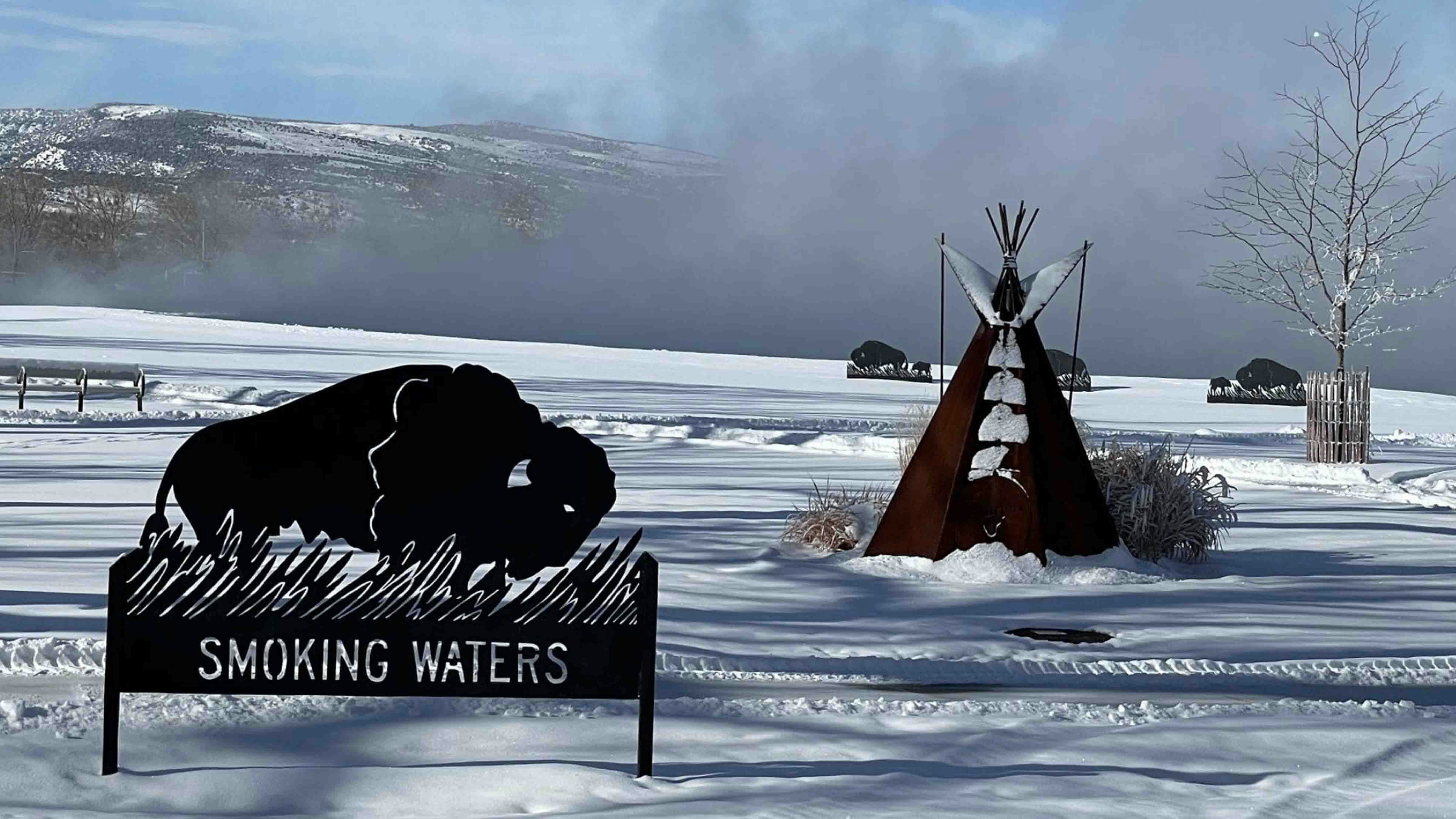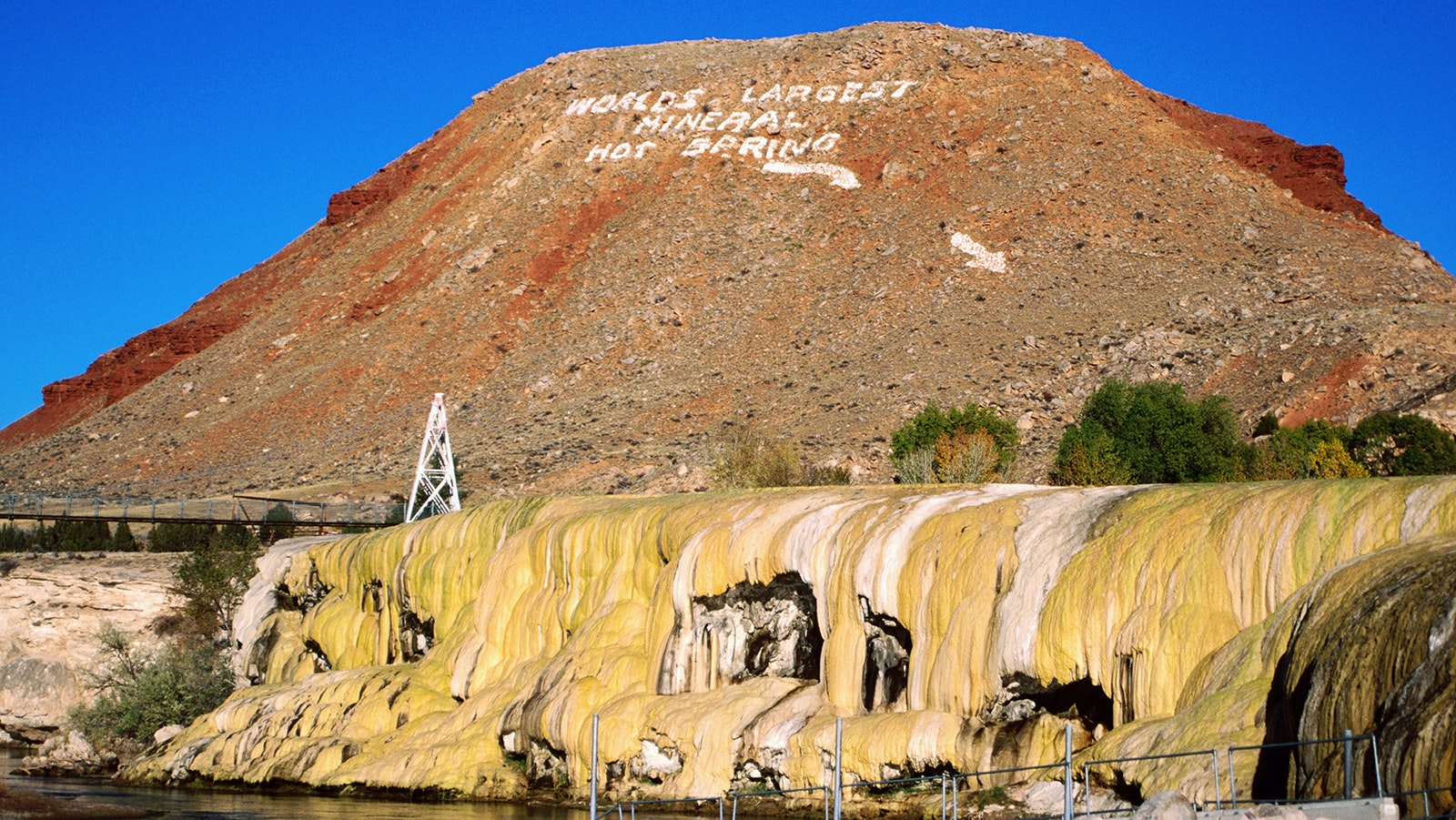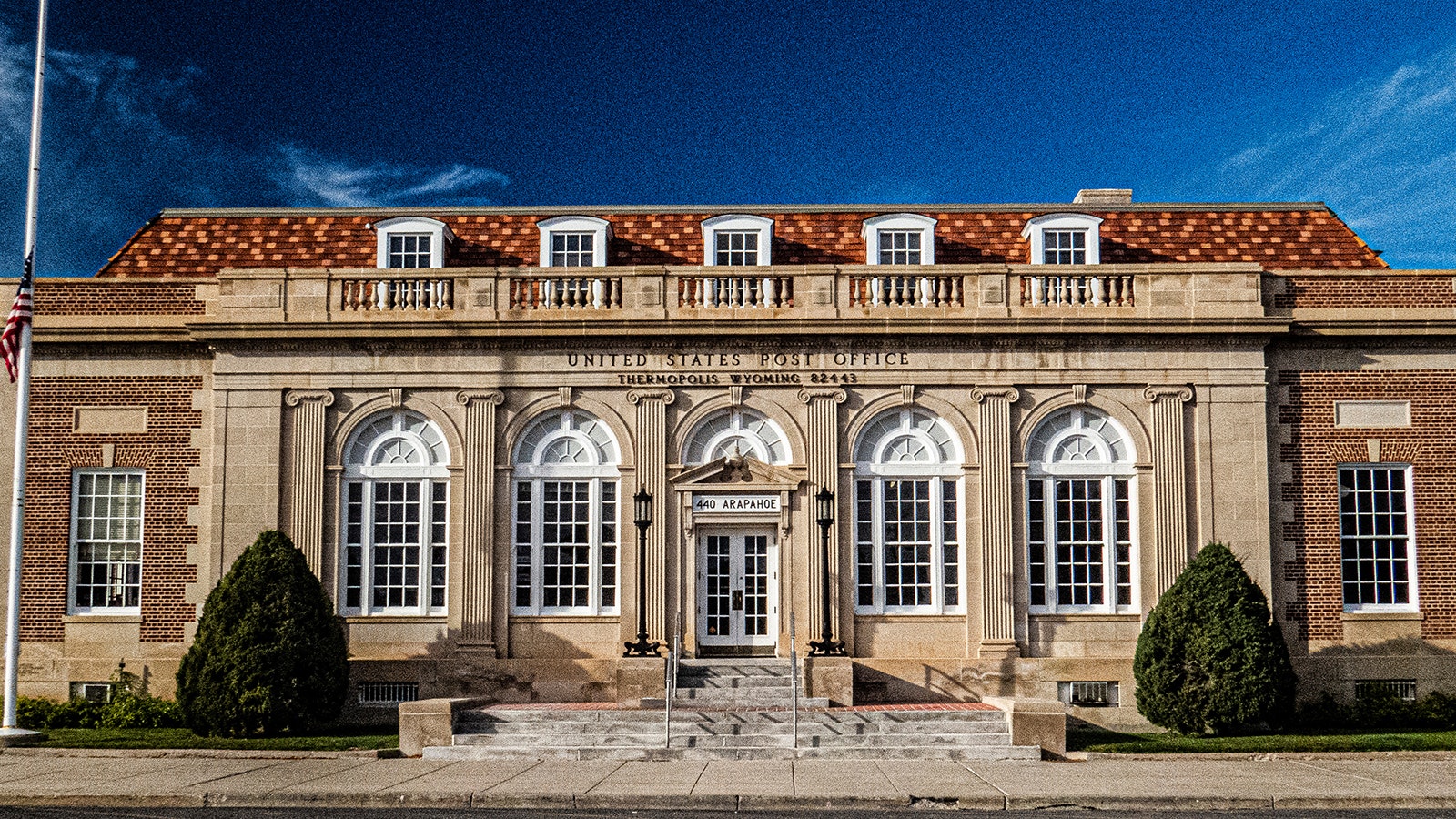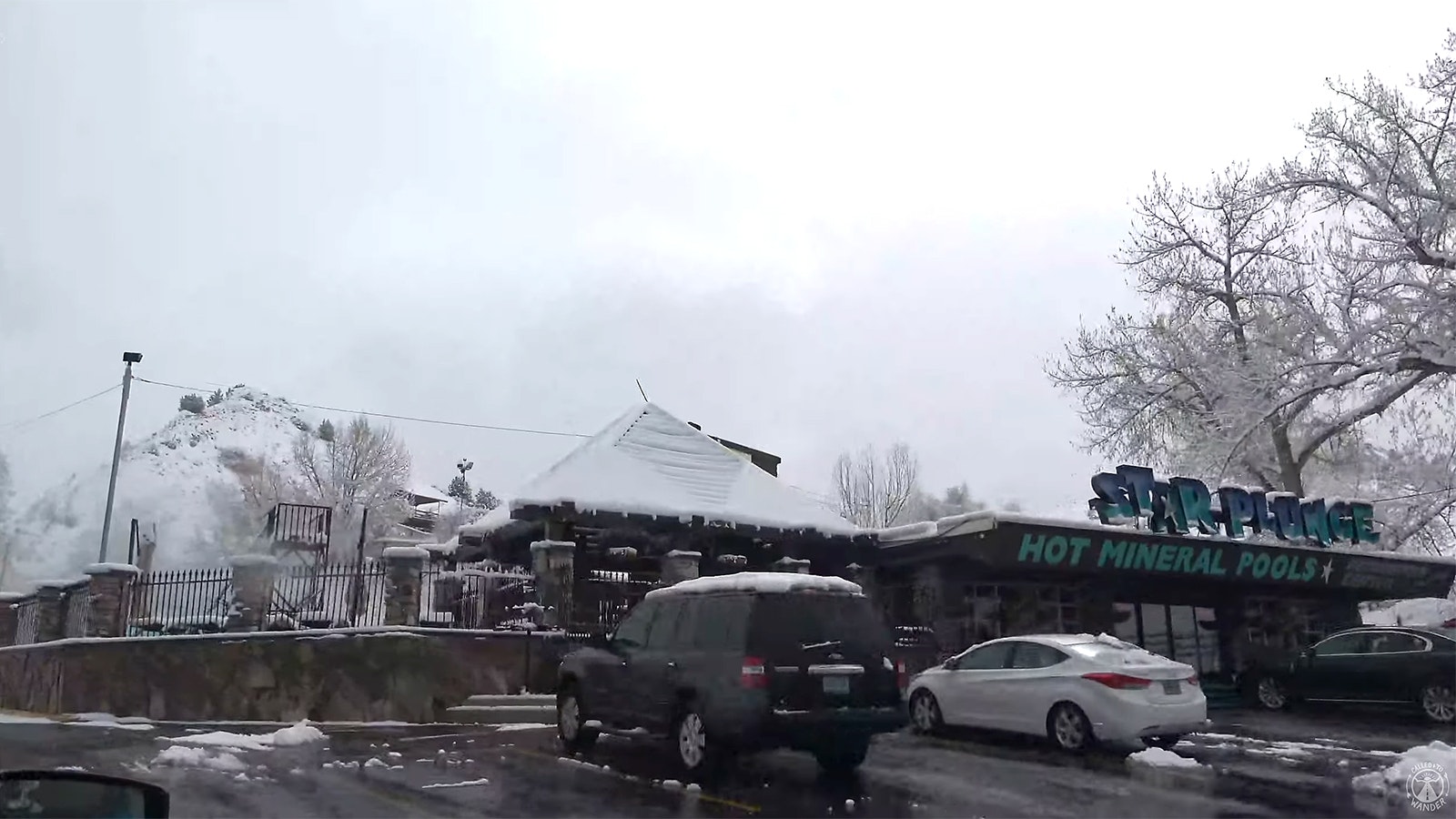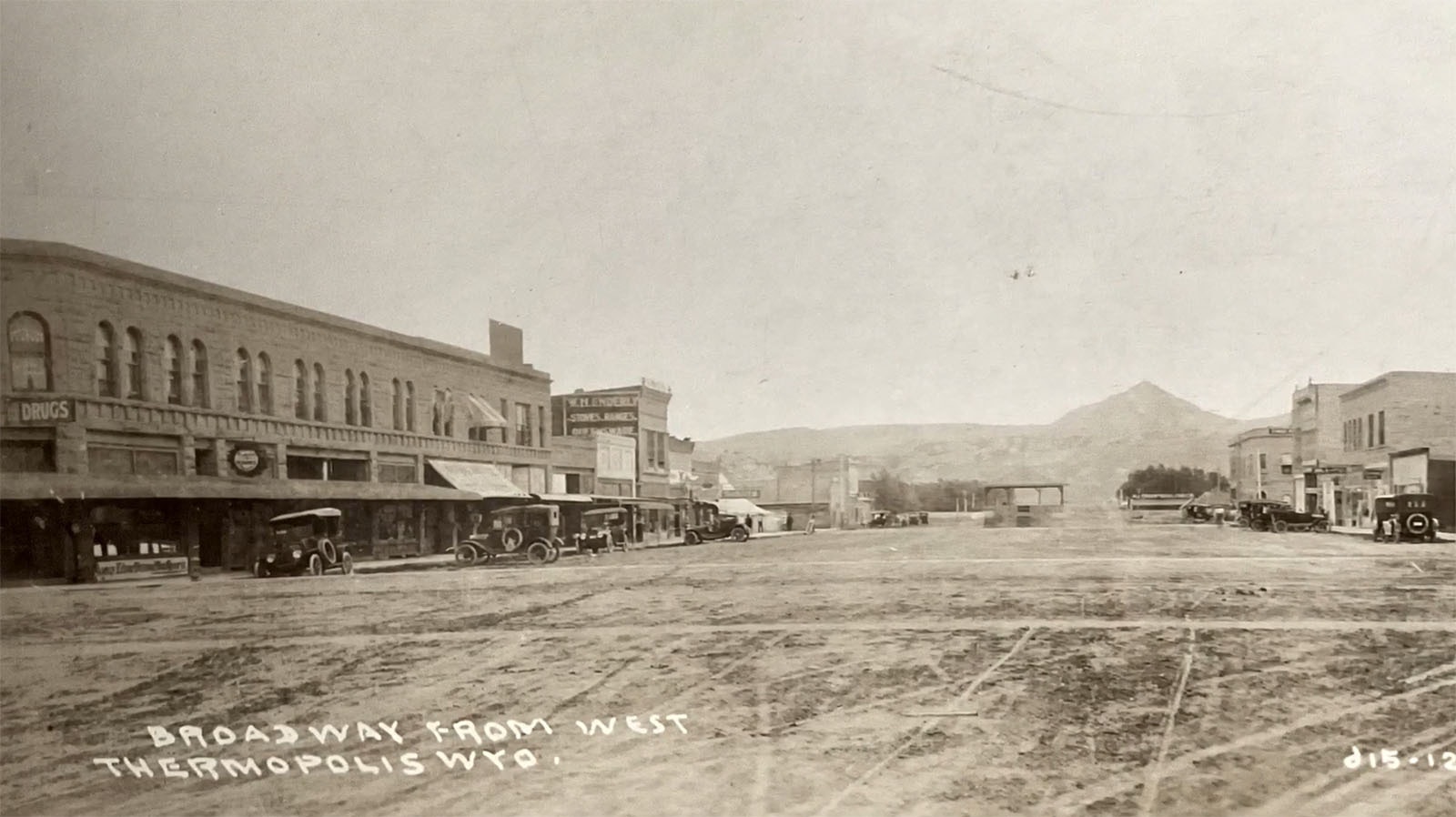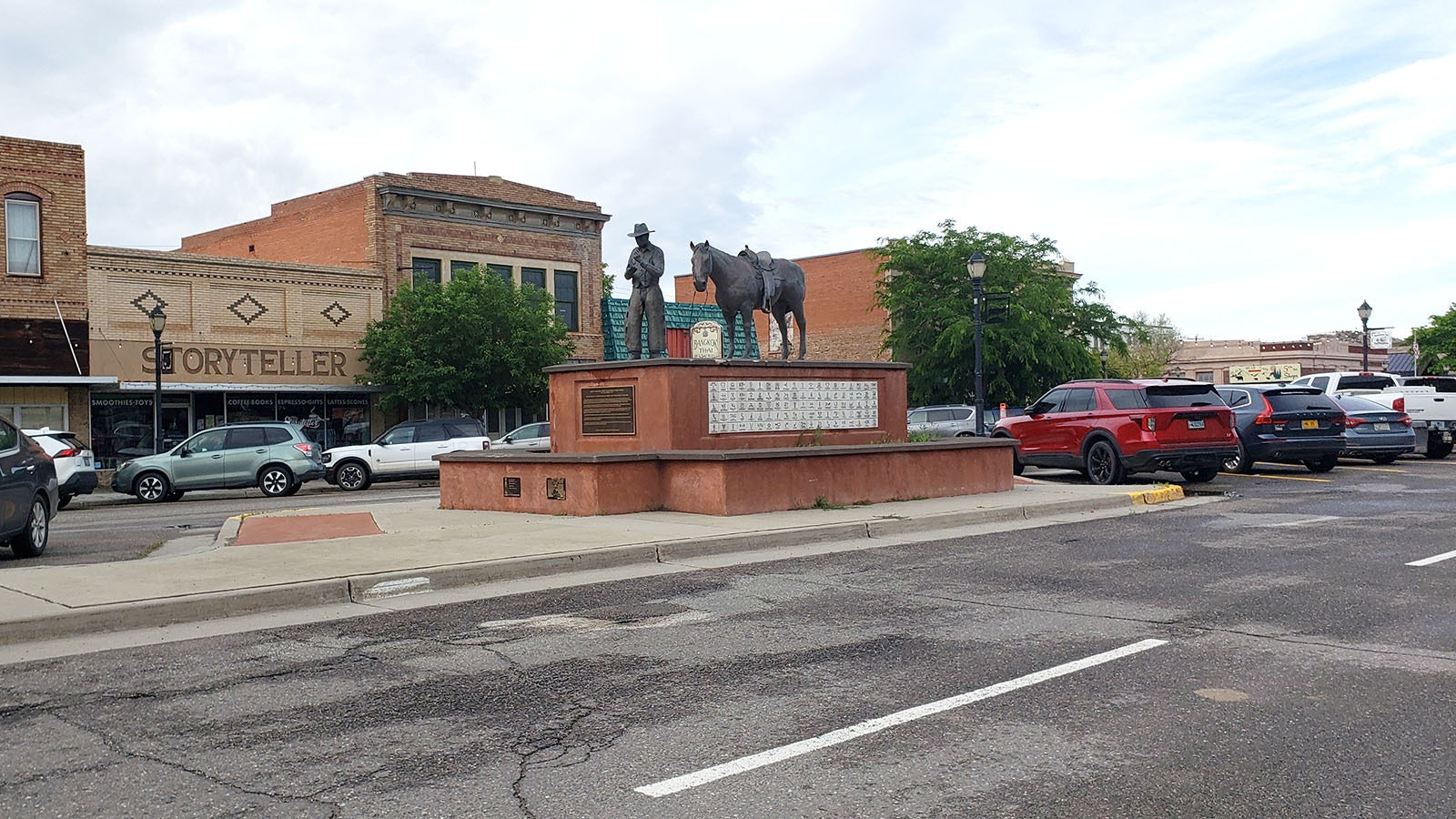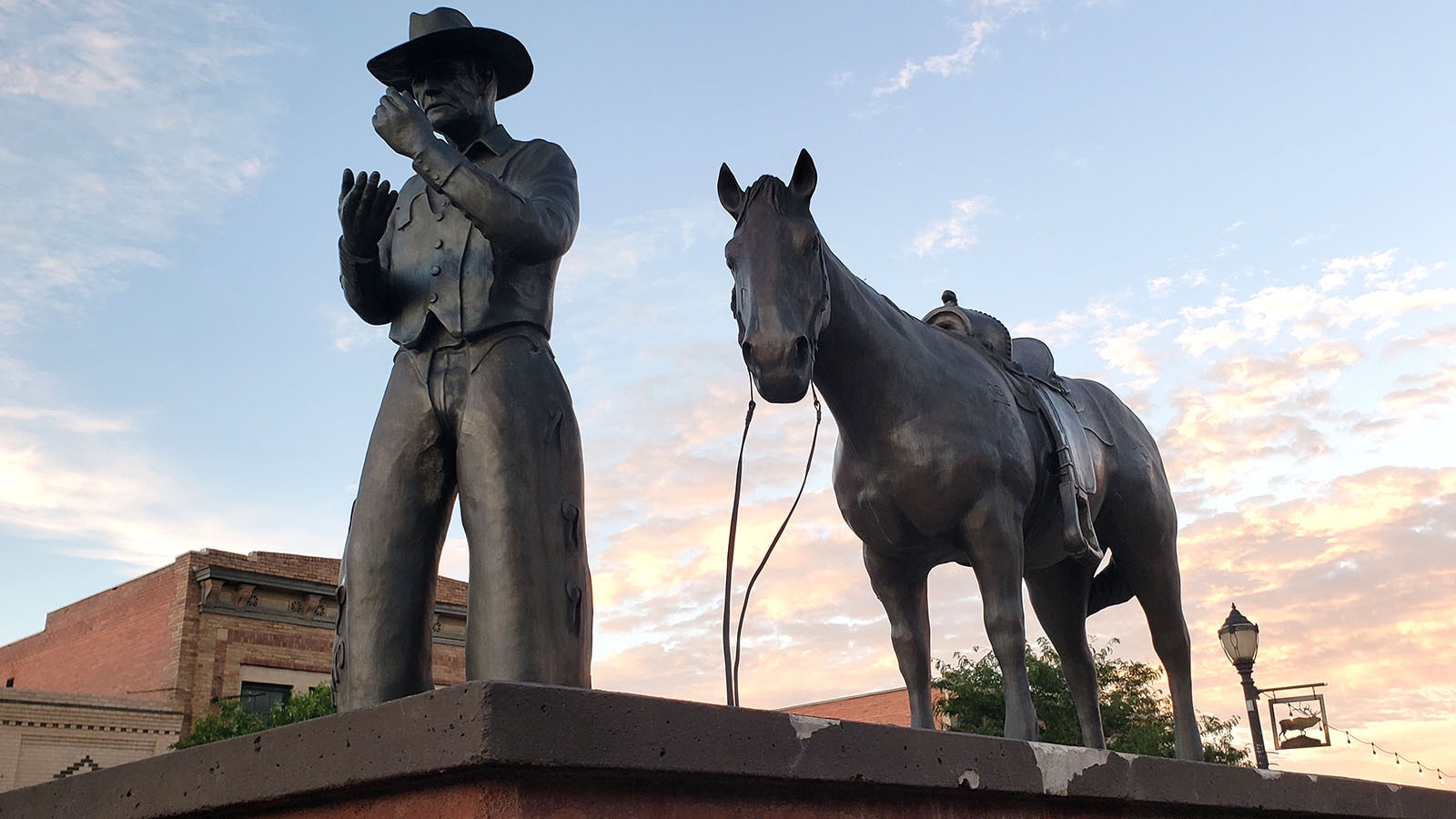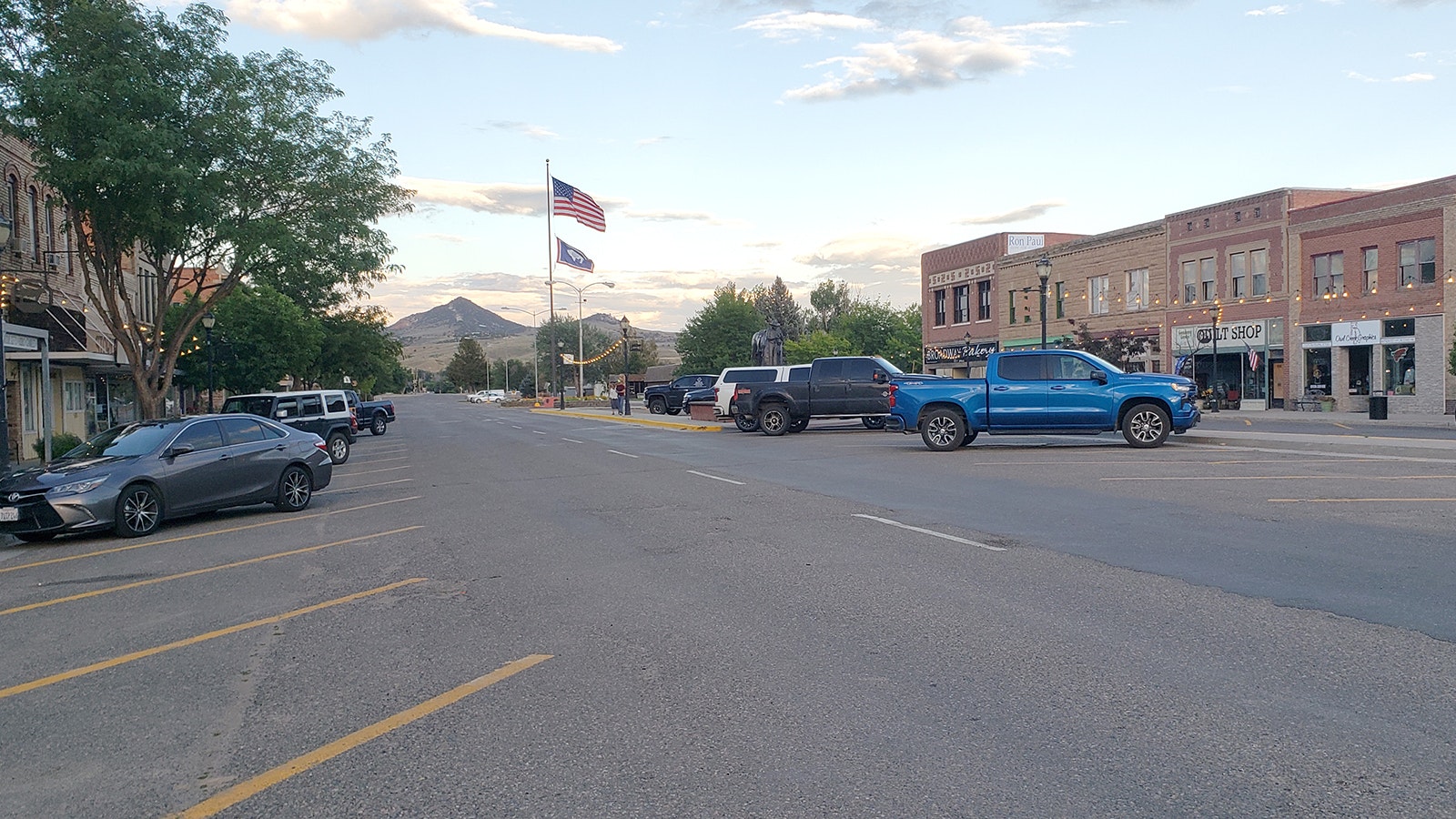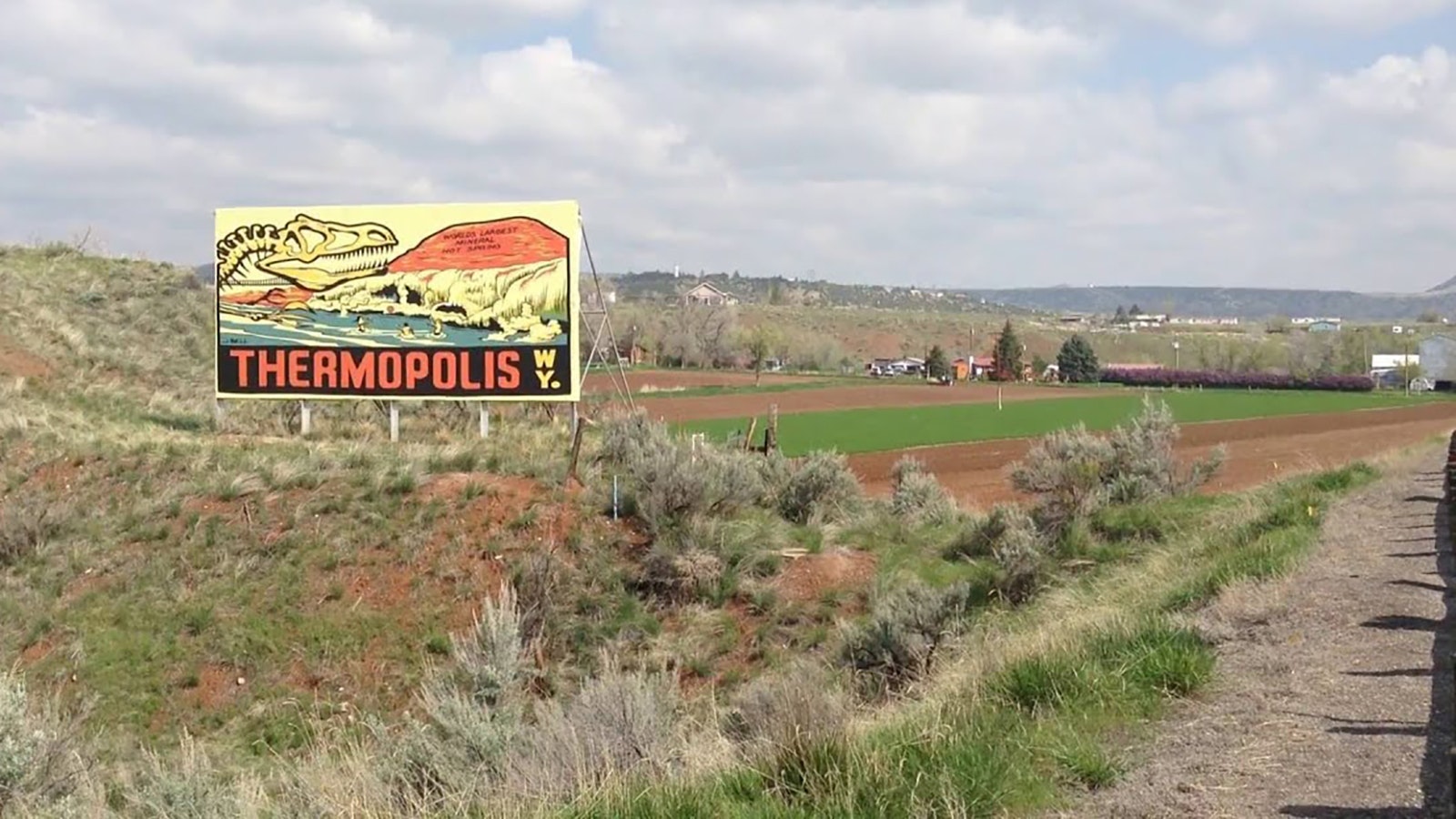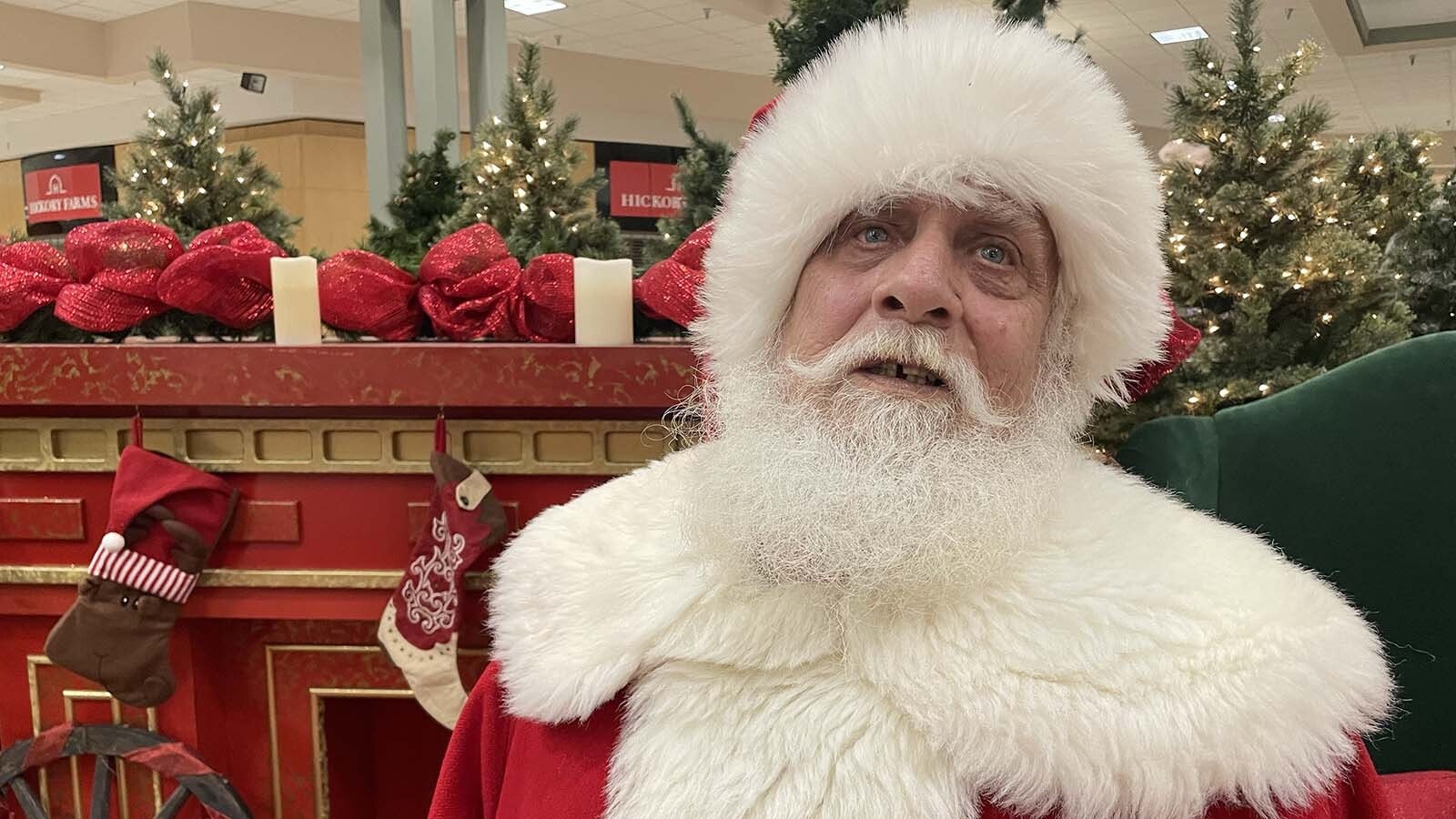History doesn’t record the exact conversation that led to the naming of Thermopolis, Wyoming, but given that it was Wild West outlaw country, can there be any doubt that the first conversations probably happened in a smoke-filled room with a lot of whiskey?
For one thing, the name Thermopolis is in and of itself mighty unusual.
Thermopolis Tourism Director Jackie Dorothy has found it nowhere else in the United States.
Based on a quick Google search, there’s only one other recorded instance of its use in world history. The ruined Aquae Callidae in Bulgaria, where lies the long-lost city Terme, is also referred to as Thermopolis by historians.
That ancient, lost Thermopolis was also a hot springs city and was quite famous in its heyday around 26 AD, hosting the ultra-wealthy as well as all the monarchs and sultans and emperors of the time.
Archaeological evidence suggests the site was popular long before that, too, going back at least to the Neolithic Age, which began sometime around 10,000 BC.
More recently, Terme and the Aquae Callidae are being restored as a tourist destination, and their history preserved.
Thermopolis, Wyoming, meanwhile, is already a well-preserved tourist destination, and one with a name that’s one-of-a-kind legendary, any way you look at it.
The story of how it came by that name is equally legendary.
Swiping A Post Office
Dorothy has been researching the origins of Thermopolis’ name as part of her ongoing Outlaws of Pioneer Country podcast.
What she has found is that one of the town’s most notorious outlaws, a man whose name is all but lost to history, likely had a hand in the naming of Thermopolis.
Or, at the very least, he agreed not to disagree with it.
Dorothy found the story recounted in an old newspaper clipping. Not a shot was fired during the deliberations — a wonder for a town where cowboys rode through, firing bullets along the way — which was kind of common place.
In fact, cowboys rode through so often firing shots as they went that young fishermen would dig the spent slugs out of their log cabins to use for weights.
The naming of Thermopolis is as quirky as that detail, or any of the other outlaw stories Dorothy has uncovered.
“It is just hilarious,” Dorothy told Cowboy State Daily. “They’re actually apologizing. One of the guys is like, ‘If you don’t like the name, it’s not my fault.’ I could just picture exactly what happened, and it cracks me up.”
In the newspaper clipping, a young cowboy named Ben Hanson has called a meeting of nine community leaders to name the town plot he had established at the mouth of the Owl Creek, across the river from a rival community, Andersonville.
At that time, Andersonville was a mite bit ahead of Hanson’s little town plot. Hanson had only been able to sell a few of his lots, one to a pharmacist and general store owner, Ed Enderly, another to a saloon operator, and a few to random folks, like taxidermist Ed Cameron.
But something was about to happen that would change Hanson’s fortunes. Some of his men had caught wind that Ed Cusack, the local postmaster at the Embar Ranch, which was on the way to Anchor Dam a ways out on Owl Creek, had decided to let his post office go.
“Before Andersonville found out about that, (Hanson) had grabbed the rights to have a post office,” Dorothy said. “And while they were filling out the paperwork on there, it says, ‘What is the name of your town?’”
That presented a bit of a conundrum, because Hanson had never given any thought to a name for the town plot he had established.
Here Comes The Greek Portmanteau
Hanson called a meeting of nine or so community members to help him decide on a name. But it quickly became apparent to those gathered that there had been a few behind-the-scenes machinations ahead of this meeting.
When one of the cowboys tossed out the name Hansonville, to honor the town founder, Hanson forgot himself and immediately shook his head, no.
Dr. Julius A. Schuelke, meanwhile, smoothly stepped in with what he said would be a much better name for a town located so near a quality hot springs — Thermopolis.
“All of these guys thought it was the most ridiculous, silly name they’d ever heard,” Dorothy told Cowboy State Daily. “And they’re kind of looking at each other.”
That is when Joe Magill stepped in to save the day.
Magill was born in the ancient city of Dungannon in Northern Ireland, and still spoke in a thick Irish brogue. But, the school teacher also spoke six or seven languages, as well as some Indian dialects, and everybody in the room knew what an educated man he was. They all respected his opinion.
So, when he told them that the word was an actual Greek term for hot or hot water city, the other cowboys believed him.
In reality, the word was a Greek portmanteau, where individual words are strung together to create a new one.
This one took the Greek “thermae,” which means hot or hot water, and married it with “polis,” which means city.
The “o” replacing “ae” and the extra “o” between the two words just helped everything flow a little better.
“So, Joe Magill stands up and gives this little speech,” Dorothy said. “And you’ve got to imagine he’s got this strong Irish accent, and he’s telling them that no, Thermopolis actually means hot city in Greek.”
Magill had even sent water from the nearby hot spring to have it tested, and had found it to be as good a quality as any in Europe, which was just further proof that Thermopolis was the perfect name.
With two such classically educated men telling them all this, the cowboys decided to go along with it, even if it had seemed strange at first.
“And that’s how Thermopolis got its name,” Dorothy said.
Buyer’s Remorse
Evidently, down the line, there was a little bit of buyer’s remorse surrounding the name they’d all been sold.
Newspaper articles written decades later quote two of the last remaining members of the nine cowboys who named the town, and both were all but apologizing for their votes in favor of Thermopolis.
“I hope future generations of the basin will not hold this against me, as I really had nothing to do with choosing the name,” W.T. Slane was quoted as saying. “I had never heard it until Dr. Schuelke sprung it on us.”
Slane listed the names of the others present at the meeting as Cameron the taxidermist, freighter Warren Bickford, Dr. Schuelke, Hanson, pharmacist Ed Enderly, Magill, Ed O’Reilly and Lee Walter.
“Out of his Latin or Greek — or something — Schuelke had evolved the name — ‘thermo’ meaning hot and ‘polis’ for city,” Walter said. “I think Enderly and Hanson had already accepted (Thermopolis) and the meeting was more to announce it and not hear demurrers.”
Thermopolis, with its new post office, pulled ahead of the more commonly named Andersonville in the race to become a thriving city. When Thermopolis was moved from Owl Creek to its new location after the hot springs and land surrounding it was sold from the Wind River Reservation, the young city held onto its distinctive Greek name.
But Hanson’s fortunes were about to take an enormous turn for the worse, one that would all but erase the memory of his role in the naming of founding and naming Thermopolis.
Time For One More Dance Around The Room
A reporter visited the budding new town of Thermopolis in June 1895. He wrote about a dusty town of about 60 people at the time, playing host to nearly 5,000 visitors at the nearby bathing resort.
Hanson had continued to build on his town lots and grow his own wealth along with his city by the hot springs. He owned some of the best buildings in the town, including the livery barn, which he ran. He was undoubtedly the city’s most prominent and well-known resident.
But the young and handsome cowboy had a fatal flaw. He liked the ladies. All of the ladies. Even the married ones.
It was his interest in one of these married ladies that ultimately changed Hanson’s luck from good to bad.
Rumors had flown to Thomas Morrow, alias Jim Bird, that his wife and Hanson had been fooling around for about a year. And now, even though the affair had ended, Bird was threatening to kill Hanson over it.
Hanson and Bird had talked, and Hanson had thought things were all right. But, one fateful night, Bird had been drinking at a dance across the Big Horn River. On his way home, he was invited to attend a dance at Hanson’s newly constructed hall.
A friend of Hanson’s hearing this invitation, rushed to warn Hanson that trouble was coming.
But Hanson wasn’t going to leave his own party.
“Trouble?” he was reported to have said. “Trouble’s what I’m looking for.”
Hanson continued dancing with a Mrs. Purcell at his party, even as Bird drew nearer to the dance hall. When his lovely dance partner begged him to hide, Hanson told her not to worry.
“As they danced around, he goes, ‘We have time for one more spin around the room,’” Dorothy said. “So, he’s dancing around the room and, as he comes close to the door, Bird comes bursting in with the gun.”
But Bird didn’t even get a chance to fire his gun. Hanson shot him not once, but three times, according to historical accounts, killing Bird dead in the front doorway.
On The Run
At first, Hanson went on the run, but was eventually persuaded to turn himself in. It was, after all, self-defense, not murder, as the friends of Bird were claiming.
But after two years in jail, it becomes clear that the powers that be, many of whom were friends with Bird, didn’t really care what the truth was.
And, too, Hanson had mighty attractive property. In those days, the owners of attractive properties tended to find they had more trouble with the law than others.
“The people who put Hanson in jail were all working together because they wanted property,” Dorothy said. “So, if they were mad at someone, they would trump up these charges and, because they were the judges and the lawyers and the policemen and sheriffs, they could send them to jail.”
As this became clear, one of Hanson’s supporters snuck a saw into the jail so Hanson could cut his way out.
“Then he escaped on the deputy’s horse, which is hilarious,” Dorothy said. “And the deputy didn’t pursue him until the next day about noon.”
By that time, Hanson had made it to the Hole in the Wall Gang’s hideout, where Butch Cassidy helped his friend vanish, seemingly without a trace.
Except years later, when a certain Thermopolis postmaster happened to be visiting a town in South Dakota.
“Ed Enderly wouldn’t say exactly where,” Dorothy said. “Just that he had come across Ben Hanson, who was by then a wealthy cattle dealer, married with kids. And (Hanson) told Enderly, ‘Man, I still have a hankering to go back to Thermopolis.’”
But Enderly warned him not to come back, Dorothy said.
“He told him there’s still a bounty on his head and Martin McGrath, who is today considered the father of Thermopolis, would have him arrested,” Dorothy said.
Whether Hanson ever went back to visit Thermopolis again remains a mystery, Dorothy added, but if he did, he was never caught, forever evading the justice some had wished to mete out.
His name, however, didn’t fare as well. McGrath and Bird’s other friends put Hanson’s name down in the history books as a murderer, rather than the town of Thermopolis’ original founder.
Renée Jean can be reached at renee@cowboystatedaily.com.

